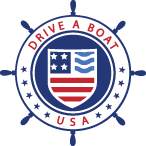Marine Distress Signals: Types and Uses
Marine distress signals can take a number of forms. In general, they consist of visual or audio signs that show other boaters or rescue personnel that you need help.
Recreational boating is all about getting out on the water and having a good time. Nevertheless, it’s important to be prepared for emergencies, so that your boating adventure ends well no matter what might go wrong.
Let’s take a look at the various types and uses of marine distress signals.
Marine Distress Signals for daytime use
Boaters who are in distress can use several different types of Marine Distress Signals during the day to alert others to their situation. Remember, it is against the law to use a Marine Distress Signal unless you are actually in danger and need help.
Visual Distress Signals
According to U.S. law, all recreational boats navigating U.S. Coastal Waters, the Great Lakes, or water bodies directly linked to them, where these waters are less than 2 miles wide, must, by law, have visual distress signals on board. There are some exceptions: for more detailed information on VDS, please refer to our article about Visual Distress Signals.
VDS that can be used during the day include:
- Distress cloth: A red cloth marked with a black square and ball. This signal can be flown from the mast or laid across the roof of the boat.
- Dye marker: Orange dye that can be released into the water surrounding your boat.
- Code flags: Orange flags either with the same square and ball pattern as the distress flag, or with a capital N over capital C. Other types of flags, such as the Victor ‘I require assistance’ flag (White with a red X), can also be used, even if they are not specifically designed to signal distress. These can be flown from any visible part of the boat.
- Arm signals: Stretch your arms out to the sides and raise and lower them repeatedly to signal that you are in distress.
- Pyrotechnic devices: These include SOLAS parachute flares, multi-star flares, handheld flares and orange smoke flares. Always check that your pyrotechnic devices are not expired and be sure to keep them within easy reach but secured away from children. Always confirm that equipment of this type, which could be a safety hazard, has been approved by the USCG.
Flashlight: Use a bright flashlight to flash the S.O.S. signal (short-short-short, long-long-long, short-short-short)
Audio Distress Signals
You can also use audio signals during the day to ask for help. Coast Guard-approved audio signaling devices include:
- Marine radio: Set your radio to 21-82 KHz (MF), OR use Channel 16 (156.8 MHz (VHF)) OR communicate a DSC alert on Channel 70 (this service is not offered in all locations, and only works with DSC-type radios)
- VHF Radiotelephone: This piece of safety equipment allows you to communicate on specific radio channels, in order to ask for help. Depending on the size of your boat, you may need a station license from the USCG to operate this device. You should learn how to formulate an appropriate Mayday distress call that includes your name and position, before using this device.
Sound signalling device: Use a foghorn, bell or whistle to make a continuous sound. Or, use a gun or other explosive mechanism to fire a signal at one-minute intervals.
Other Distress Signals
Other distress signals that you can use to ask for help include:
- EPIRB (Emergency Position Indicating Radio Beacon): This is a beacon that transmits a digital 406 MHz distress signal to a worldwide Search and Rescue (SAR) network, indicating your exact location. An EPIRB will float if your boat capsizes.
- General signals: If you are able to signal to another boater that you need help without using any of the above methods, do so. Always use common sense and rely on your judgement when signalling distress out on the water.
Marine distress signals for use at night
Most of the above distress signals can be used at night. Just use your common sense: if a signal will not be visible in the dark (such as a flag, dye, arm signal or weak flashlight beam), then don’t use it.
USCG laws stipulate that you can carry any combination of Visual Distress Signals and meet legal requirements, as long as you have on board a total of:
- three signals for daytime use, and
- three signals for night-time use.
It’s important to keep your distress signalling equipment within easy reach, so that you can locate it even without a light.
Learn more about boating safety regulations with Drive a Boat USA!
Did you know that Drive a Boat USA offers a premium boating safety course? Find out what you need to know about using Marine Distress Signals correctly so that you can be rescued from danger while boating.
You can study and take your test online in California, Florida or New York.


